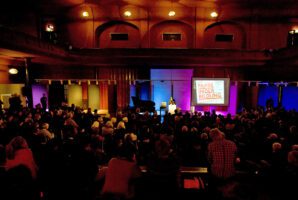
The eyes, mouth and hands of our caregivers are the first signs whose meaning we can perceive in the diffuse color and light structure of the environment. The eye movements of our eyes find these targets because there are specific cells in our brain that encourage us to imitate the gestures shown. This turns the observed smile into our own smile, the gestural meaning of which we immediately feel in our body. In this intuitive way, we can learn and understand clearly even without prior knowledge.
Our field of vision forms the necessary context of a complex event in which we can orient ourselves and look for something in a targeted manner. Through the constancy of contrasting color and light sensations, a vivid sign system of codified gestures is formed in the implicit memory. Soon we can orientate ourselves in the descriptive “behavior matrix” of the environment and interact with it, even though we cannot represent the individual forms and figurations either visually or verbally. The fact that we see something and can successfully orient our behavior and actions towards it does not mean that we know it.
Since we understand and use most gestures intuitively, they remain in our background consciousness until we visualize their form and figuration through the vivid representation. By physically imitating the gestures of people or the habitus of things, drawing or painting pictorially, sculpting or spatializing, we determine the symbolic character of the form. The symbolic statement can be determined by asking how the observed facts appear to us. Like our gestures, we use symbolic forms and figurations to codify behavioral states and action contexts. The development of our representational skills is equivalent to a descriptive language ability that determines what we can say about our world. Those who can only see remain silent.


